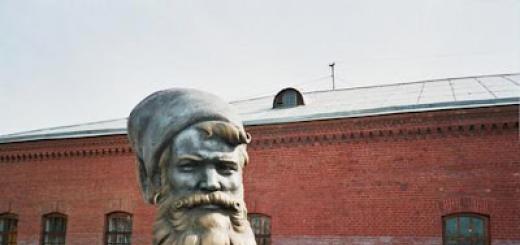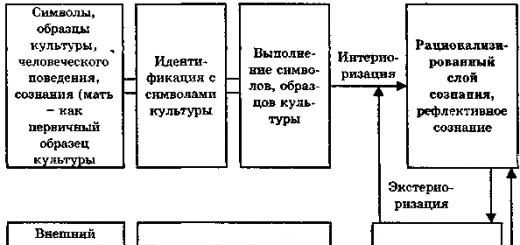Zinc oxide ZnO - semiconductor connection. Zinc oxide - compound white color, which sublimates at 2000 K, melts at 2250 K, exhibits both basic and acid properties, soluble in acids and alkalis.
The most common crystalline modification is the hexagonal wurtzite type. A rarer cubic sphalerite type is also known.
Zinc oxide can be obtained by burning or oxidizing zinc, by roasting zinc sulfide in air, by calcining
salts, precipitation with ammonia from a boiling aqueous solution of zinc nitrate.
Compact samples of zinc oxide (zincite) are obtained by pressing blanks from a powdered compound and their subsequent sintering. Preliminary sintering is carried out at 1100 K. Final sintering is carried out at 1700...1800 K. Heating is carried out either in special high-temperature furnaces or by direct current passing through the samples after they have been preheated to a temperature at which sufficient electrical conductivity occurs. At a final sintering temperature of 1700...1800 K, coarse-grained samples with crystals up to 2 mm are formed. To obtain a finer-grained structure, the sintering temperature is reduced to 1300...1400 K. Zinc oxide single crystals are grown by the hydrothermal method and from the gas phase.
Thin films of zinc oxide ZnO can be obtained by evaporation and condensation of zinc on a substrate in a vacuum, followed by oxidation of the metal film when heated in an oxygen atmosphere or reactive two-electrode ion sputtering Zn in an Ar + O 2 atmosphere.
ZnO thin films exhibit the piezoelectric effect.
Main properties of zinc oxide
Molecular weight 81.38
Crystal structure G
Permanent crystal lattice, nm:
A 0.3250
C 0.5206
Density, Mg / m 3 5.67
Temperature, K:
melting point 2250
boiling 2000
Specific heat capacity, J/(kg× K) 495
Temperature coefficient of linear expansion for
single crystal, α× I 0 6 , K -1 5.7 || a
5.2 || With
Resistivity, Ohm× cm 10 8 …10 9
Thermal conductivity coefficient, W/(m× K) 15…30
Mohs hardness 4.0…5.0
Refractive index 1.96
Dielectric constant 8.5
The use of zinc oxide.
Zinc oxide is used in radio electronics for the manufacture of self-activated phosphor ZnO:Zn. This phosphor is obtained by calcination ZnO in a weakly reducing atmosphere of carbon monoxide at 1270 K - The color of the glow of the phosphor is blue-green, the radiation is characterized by two maxima., attributable to wavelengths of 0.385 microns (ultraviolet region) and 0.505 microns (blue-green region of the spectrum). This phosphor has a very short afterglow, about 2 μs.
Zinc oxide has found its main application in the production of varistors, devices whose electrical resistance is highly dependent on the applied voltage. On the basis of varistors, surge arresters (SPDs) are created that suppress surges in power networks.
This is due to a special property of varistors - the nonlinearity of the current-voltage characteristic. Silicon carbide also has a non-linear current-voltage characteristic, but the non-linearity coefficient of varistors based on zinc oxide is 1-1.5 orders of magnitude higher.
For the manufacture of varistors, ZnO powder of submicron size, oxides of other metals ~5% (bismuth, cobalt, antimony, manganese, chromium) and inorganic binders are mixed, molded under a pressure of ~10 4 ... 10 6 MPa and fired for several hours at temperatures from 1200 to 1600 °C. During the reaction interaction, the material is transferred through the liquid phase from zinc oxide grains with a high surface energy to grains with a lower surface energy. The material is compacted during sintering, and as a result a new polycrystalline structure is obtained.
A zinc oxide varistor is a polycrystalline semiconductor material whose individual grains are in electrical contact with each other. At the contact points of zinc oxide grains, there are thin insulating regions, which cause the nonlinearity of the current-voltage characteristic. The mechanism of non-linearity of varistors is not well understood. Most likely, the nonlinearity is due to the phenomena at grain boundaries, and additional additives in the composition of varistors also have a decisive influence.
An inorganic substance in demand different areas production, medicine and everyday life. ZnO formula. It occurs naturally as the mineral zincite.
Properties
White fine crystalline powder, insoluble in water. Sublimates at t +1800 °C, melts at 2000 °C. It has semiconducting properties, low thermal conductivity, absorbs ultraviolet. Thin films have piezoelectric properties. When heated, it becomes yellow, after cooling it turns white again. Does not burn. When in contact with the skin does not cause irritation, on the contrary, it has an anti-inflammatory and disinfecting effect.
Zinc oxide is an amphoteric oxide that reacts with both acids and alkalis. The reaction with acids leads to the production of salts, with alkalis - complex compounds of hydroxozincates. Reacts with hydrogen, carbon, ammonia solution, carbon monoxide, methane, calcium carbide, ferrosilicon. As a result of fusion with metal oxides and hydroxides, zincates are obtained, and if the reagent is fused with boron oxide or silicon oxide, then borate and zinc silicate are formed.
Precautionary measures
 Zinc oxide is considered a low-hazard and low-toxic substance, non-flammable and non-explosive, IV degree of danger. But dust, suspension, zinc oxide aerosol cause irritation of the respiratory tract and "casting fever". Swallowing leads to diseases of the gastrointestinal tract. In industries dealing with large quantities of bulk reagent, with roasting brass, workers must use respirators, goggles, gloves and safety shoes.
Zinc oxide is considered a low-hazard and low-toxic substance, non-flammable and non-explosive, IV degree of danger. But dust, suspension, zinc oxide aerosol cause irritation of the respiratory tract and "casting fever". Swallowing leads to diseases of the gastrointestinal tract. In industries dealing with large quantities of bulk reagent, with roasting brass, workers must use respirators, goggles, gloves and safety shoes.
The reagent should be stored in sealed containers (polyethylene and paper bags or bags; steel, cardboard, plywood barrels and containers), since access to carbon dioxide and moisture from the air can lead to recrystallization into zinc carbonate. If, due to prolonged improper storage, zinc oxide nevertheless turned into zinc carbonate, then it can be restored to its original properties by calcining it. Zinc oxide is stored in covered, dry warehouses without access to sunlight. Permissible storage temperature range - from -40 to +40 °C.
Application of zinc oxide
Filler and dye for rubber, polymers, paper; vulcanizing agent  for some types of rubbers; catalyst in methanol production; pigment for paint and varnish industry (zinc white).
for some types of rubbers; catalyst in methanol production; pigment for paint and varnish industry (zinc white).
- It is used in the production of glass and paints based on liquid glass; rust converter compounds; photocatalytic disinfecting wall and ceiling coatings in hospitals; artificial leather, sole rubbers.
- Filler creams, ointments, powders and powders in cosmetology and pharmaceuticals. Ingredient in sunscreens, toothpastes.
- Mineral supplement for animal feed.
- Raw materials in the glass and ceramic industry.
- In the electronics industry, zinc oxide is used to manufacture varistors (semiconductor elements whose conductivity depends on voltage), phosphors, blue LEDs, powder lasers, thin films for sensors.
- In metallurgy - for the manufacture of electrical cables.
- In medicine, it is used as an antiseptic, drying, astringent, adsorbent substance. It is added to many external dermatological remedies for the treatment of eczema, bedsores, baby prickly heat, herpes simplex, wounds, cuts, burns, ulcers.
- In dentistry, abrasive materials are made, added to dental cement. In surgery, rubber products based on zinc oxide are used.
In our online store you can buy zinc oxide High Quality at an affordable price. Delivery and pickup available. Buying from us is convenient and profitable!
Structural formula
Russian name
Latin name for zinc oxide
Zinci oxydum ( genus. Zinci oxydi)Gross formula
ZnOPharmacological group of the substance Zinc oxide
Nosological classification (ICD-10)
CAS code
1314-13-2Characteristics of the substance Zinc oxide
Anti-inflammatory agent for local use. White or white with a yellowish tint amorphous powder, odorless. Absorbs from the air carbon dioxide. Practically insoluble in water and ethanol, soluble in dilute mineral acids and acetic acid, in alkali solutions.
Pharmacology
pharmachologic effect- antiseptic, astringent, drying.Forms albuminates and denatures proteins. When applied to the affected skin surface, it reduces the severity of exudative processes, eliminates local manifestations of inflammation and irritation; has an adsorbing effect, forms a protective coating on the skin, which reduces the impact of irritating factors on it. Applied externally in the form of powder, ointment, paste, liniment.
Application of the substance Zinc oxide
Dermatitis, including diaper dermatitis (treatment and prevention), diaper rash, prickly heat; superficial wounds and burns (including sunburns, cuts, scratches), ulcerative skin lesions (including trophic ulcers), bedsores; eczema in the acute stage, herpes simplex, streptoderma.
Contraindications
Hypersensitivity.
Routes of administration
Outwardly.
Substance precautions Zinc oxide
Avoid contact with eyes.
Interactions with other active substances
Trade names
| Name | The value of the Wyshkovsky Index ® |
For centuries, zinc oxide has been used in medicine. Mentions of it are found in the ancient Indian medical text "Charaka Samhita". Also, the use of zinc oxide for medical purposes is described by the Greek physician Dioscorides. Today, this substance finds a variety of applications in pharmacology and industry.
zinc oxide is an inorganic compound found in earth's crust in the form of a mineral known as zincite. However, in order to satisfy most of the commercial demand for this compound, it is also synthesized artificially. Chemical formula zinc oxide ZnO. It is a white, powdery substance that is insoluble in water and alcohol, but soluble in most acids, including hydrochloric acid(HCl).
Burning zinc in air to produce zinc oxide was a common practice among alchemists. The substance obtained in this way looks very loose and resembles white tufts of wool, which is why it is called "the wool of the philosophers."
The mineral zincite may have a slightly yellowish or pinkish color due to the presence of manganese and other impurities. Zinc oxide is known to react strongly with aluminum and magnesium powder. Another interesting property of this inorganic compound is that it is able to absorb ultraviolet radiation. In addition, zinc oxide is known for its properties such as high thermal conductivity and the ability to have an antibacterial effect.
The use of zinc oxide in medicine
- Zinc oxide has antibacterial properties and is therefore widely used in the treatment of a number of skin diseases. It is used as an external remedy to reduce skin irritation and treat minor burns and cuts. Also, this substance can be used as a remedy for dry and keratinized skin.
Zinc oxide is used in newborn care

Zinc oxide is the most widely used product for the treatment and prevention of diaper rash.
It essentially forms a protective barrier between the skin and the diaper,
thus preventing the appearance of any rashes.
- Due to its medicinal properties, it is added to baby powders, anti-dandruff shampoos, antiseptic creams and surgical tapes. Together with iron oxide, this compound is used to create sunburn fluid (calamine lotion).
- Zinc oxide is mixed with eugenol to obtain zinc oxide with eugenol, which is used in dentistry for prosthetics and restoration of teeth.
- The ability to relieve itching and irritation of the skin makes zinc oxide an important ingredient in many rectal suppositories that are used to relieve irritation and discomfort from hemorrhoids.
- It also serves as a source of the mineral nutrient zinc, which is required for a wide range of reactions in the body. Therefore, it is added to food or vitamin supplements. As food additive, zinc oxide can also be found in fortified breakfast cereals with vitamins and minerals. Due to the presence of fungistatic properties, it is used in the production of packaging material for meat, fish and vegetables.
The use of zinc oxide in cosmetology
- Zinc oxide is able to absorb the ultraviolet radiation of the sun, and thus protect the skin from sunburn and other damage caused by UV rays.

- Zinc oxide is one of the most important ingredients in mineral cosmetics. Since the skin does not absorb it, it does not cause any irritation. In addition, its use does not lead to acne and does not cause allergies.
- Among other things, zinc oxide is used in the manufacture of deodorants and soaps. It helps eliminate body odor and prevents bacterial growth. Zinc oxide also soothes the skin and protects it from irritants.
However, care must be taken when using zinc oxide or products containing it externally. It should not be used to treat severe burns and wounds. It is important to avoid getting zinc oxide in your eyes and mouth. Exposure to zinc oxide fumes can irritate the lungs and cause "caster's fever", which has flu-like symptoms. Thus, inhalation of zinc oxide vapors is dangerous, while zinc oxide itself is not toxic.
Rating: / 3
Details Views: 7906
White zinc
zinc oxide.
Product chemical formula: ZnO
Trade designations of the product:
- Zinc white
- White zinc
- zinc oxide
- Zinc flowers
- C.I. pigment white 4
- Oxozinc
- Zincite
- Lassar Paste
Product description:
zinc oxideis an inorganic compound with the formula ZnO. zinc oxide is a white powder that is insoluble in water and is widely used as an additive in many materials and products, including rubbers, plastics, ceramics, glass, cement, lubricants, paints, ointments, adhesives, sealants, pigments, foodstuffs, batteries, ferrites , flame retardants and adhesive tape. Although it occurs naturally as the mineral zincite, most zinc oxide obtained synthetically. White zinc is a wide-gap semiconductor of semiconductor group II-VI. Natural doping of a semiconductor due to oxygen vacancies or n-type zinc interstices. This semiconductor has a number of favorable properties, including good transparency, high electron mobility, a wide band gap, and strong luminescence at room temperature. These properties are valuable in new applications for: transparent electrodes in liquid crystal displays, energy-saving or heat-shielding windows, and electronics in the form of thin-film transistors and light-emitting diodes. zinc oxide(also called white zinc) is an amorphous white or yellowish powder, insoluble in water and alcohol, but soluble in acid and alkalis. Particles zinc oxide may be spherical, needle or globular depending on the manufacturing process. Particle shape is important for maximizing physical properties. zinc oxide absorbs virtually all UV radiation at wavelengths below 360 nm and provides excellent protection for binders. zinc oxide reacts with acid components of coatings and forms zinc soaps. Zinc soaps improve the flexibility and hardness of coatings. It is used as a pigment in rubber formulation, as a white pigment in the ceramic industry, as an opaque base in cosmetics, and has other applications in the paper, paint, and optical glass industries.
zinc oxidecrystallizes in two main forms: hexagonal wurtzite and cubic galvanized blende. The wurtzite structure is the most stable under ambient conditions and hence the most common. The shape of zinc blende can be stabilized by growing zinc oxide on substrates with a cubic lattice structure. In both cases, the zinc and oxide centers are tetrahedral, the most characteristic geometry for Zn(II). zinc oxide is converted at relatively high pressures, about 10 GPa. Hexagonal and galvanized polymorphs do not have inversion symmetry (reflecting a crystal about any given point does not turn it into itself). This and other lattice symmetry properties lead to the piezoelectricity of hexagonal and galvanized zinc oxide and the pyroelectricity of hexagonal zinc oxide. As with most Group II-VI materials, the bonding of atomic structures in zinc oxide is largely ionic (Zn 2 + -O 2 - ) with corresponding radii of 0.074 nm for Zn2+ and 0.140 nm for O 2 - . This property explains the predominant formation of the wurtzite structure, rather than zinc blende, as well as strong piezoelectricity. zinc oxide a. Because of the polar Zn-O bonds, the zinc and oxygen planes are electrically charged. To maintain electrical neutrality, these planes are restored at the atomic level in most relative materials, but not in zinc oxide- its surfaces are atomically flat, stable and have no reconstruction. This anomaly zinc oxide not fully explained.
zinc oxide- relatively soft material with an approximate hardness of 4.5 on the Mohs scale. Its elastic constants are smaller than those of corresponding III-V semiconductors such as GaN. High heat capacity and thermal conductivity, low thermal expansion and high melting point zinc oxide beneficial for ceramics. Of the tetrahedrally bonded semiconductors, it has been claimed that zinc oxide has the highest piezoelectric tensor, or at least comparable to GaN and AlN. This property makes it a technologically important material for many piezoelectric applications that require a large electromechanical connection. zinc oxide has a relatively large direct band gap of ~3.3 eV at room temperature. The benefits associated with a larger span gap include higher breakdown voltages, the ability to withstand large electric fields, lower electronic noise and work at high temperatures and high power. Gap zinc oxide can be further tuned to ~3-4 eV by doping it with magnesium oxide or cadmium oxide. Majority zinc oxide has an n-type character, even in the absence of intentional doping. Nonstoichiometry is generally the source of the n-type character, but the subject remains debatable. An alternative explanation has been proposed, based on theoretical calculations, that unintentional replacement hydrogen impurities are the cause. Controlled n-type doping is easily achieved by replacing Zn with Group III elements such as Al, Ga, In, or by replacing oxygen with Group VII elements with chlorine or iodine.
In production zinc oxide there are three main methods.
- indirect method. In indirect or French process metallic zinc melts in a graphite crucible and evaporates at temperatures above 907 °C (usually around 1000 °C). Couples zinc react with oxygen in the air, which leads to the formation of ZnO, accompanied by a drop in its temperature and bright luminescence. Particles zinc oxide are transported to the cooling channel and collected in a bag. This indirect method was popularized by LeClaire (France) in 1844 and is therefore commonly known as the French process. Its product usually consists of agglomerated particles zinc oxide with an average size of 0.1 to several micrometers. Most of the weight zinc oxide in the world is produced according to the French method.
- direct process. The direct or American process starts with a variety of contaminated zinc composites such as zinc ores or by-products of the smelter. Precursors zinc are reduced (carbothermal reduction) by heating with a carbon source such as anthracite to produce vapors zinc a, which is then oxidized, as in the case of an indirect process. Due to the lower purity of the starting material, the final product is also of lower quality in the direct process compared to the indirect one.
- Wet chemical process . A small amount of industrial production is associated with wet chemical processes that begin with aqueous solutions of zinc salts, from which precipitates zinc carbonate or zinc hydroxide. The solid precipitate is then calcined at temperatures around 800 °C.
There are numerous specialized methods for obtaining zinc oxide for scientific research and applications in niche areas. These methods can be classified according to the form of ZnO obtained (bulk, thin film, nanowire), temperature ("low", close to room temperature or "high", i.e. T ~ 1000 °C), type of process (vapor deposition or growth from solution) and other parameters. Large single crystals (many cubic centimeters) can be grown by gas transfer (vapor deposition), hydrothermal synthesis, or melt growth. However, due to high pressure vapor zinc oxide melt growth is problematic. It is difficult to control the growth of gas transport, leaving preference for the hydrothermal method. Thin films can be produced by chemical vapor deposition, metal-structured vapor phase epitaxy, electrodeposition, pulsed laser deposition, sputtering, sol-gel synthesis, atomic layer deposition, sputter pyrolysis, etc. plain white powder zinc oxide can be obtained in the laboratory by electrolysis of a sodium bicarbonate solution with a zinc anode. Produced zinc hydroxide and hydrogen. Zinc hydroxide when heated, it decomposes to zinc oxide. Zinc oxide nanostructures can be synthesized into various morphologies, including nanowires, nanorods, tetrapods, nanoobjects, nanofibers, nanoparticles, etc. Nanostructures can be obtained using most of the above methods under certain conditions, as well as using the vapor-liquid-solid method. The synthesis is usually carried out at temperatures around 90 °C in equimolar aqueous solution nitrate zinc a and hexamine, the latter providing the main medium. Some additives such as polyethylene glycol or polyethyleneimine can improve the size ratio of nanofilaments. zinc oxide. Doping of nanowires zinc oxide was achieved by adding other metal nitrates to the growth solution. The morphology of the resulting nanostructures can be tuned by changing parameters related to the composition of the precursors (such as zinc concentration and pH) or to the thermal treatment (such as temperature and heating rate).
Physical and chemical properties Zinc oxide.
|
indicators |
meaning |
|
|
physical condition and appearance zinc oxide |
Solid (Powder solid) |
|
|
Smell zinc oxide |
Without smell |
|
|
Taste zinc oxide |
Bitter |
|
|
Molecular weight zinc oxide |
81.38 g/mol |
|
|
Color zinc oxide |
white to yellowish white |
|
|
Melting temperature zinc oxide |
1975°C (3587°F) |
|
|
Specific gravity zinc oxide |
5.607 (water = 1) |
|
|
Dispersion properties zinc oxide |
Does not disperse in cold water, hot water. |
|
|
Solubility zinc oxide |
Does not dissolvein cold water, hot water. Soluble in dilute acetic acid or mineral acids, ammonia, ammonium carbonate, fixed alkali. |
|
|
Stability zinc oxide |
stable |
Storage and transportation of zinc oxide:
Precautionary measures:
Keep closed. Do not swallow. Do not inhale dust. Wear appropriate protective clothing. In case of insufficient ventilation, wear suitable respiratory equipment. If swallowed, seek medical advice immediately and show container or label. Keep away from incompatible substances such as acids.
Storage: Keep container tightly closed. Store container in a cool, well ventilated area. Do not store above 25°C (77°F).
Applications for zinc oxide:
- Powder Applications zinc oxide are numerous, and the main ones are listed below. Most applications use the oxide's reactivity as a precursor to other zinc compounds. For applications in materials science zinc oxide has a high refractive index, high thermal conductivity, binding, antibacterial and UV protective properties. Consequently, it is added to materials and products, including plastics, ceramics, glass, cement, rubber, lubricants, paints, ointments, adhesives, sealants, concrete production, pigments, food products, batteries, ferrites.
- Rubber production. The rubber industry uses 50% to 60% zinc oxide. zinc oxide together with stearic acid is used for vulcanization of rubber Additive zinc oxide also protects rubber from fungi and UV radiation.
- ceramic industry. The ceramic industry consumes a significant amount zinc oxide, in particular in ceramic glazes and frit compositions.The relatively high heat capacity, thermal conductivity and high temperature stability of zinc oxide, combined with a relatively low coefficient of expansion, are desirable properties in the production of ceramics.zinc oxideaffects the melting point and optical properties of glazes, enamels and ceramic compositions.zinc oxidein the form of low expansion, the secondary flow improves the elasticity of glazes, reducing the change in viscosity with temperature and preventing cracking.
- The medicine. zinc oxide widely used to treat various skin conditions including dermatitis, itching due to eczema, diaper rash, and acne. It is used in products such as baby powder and barrier creams for diaper treatments, calamine creams, anti-dandruff shampoos and antiseptic ointments. . zinc oxide can be used in ointments, creams and lotions to protect against sunburn and other skin damage caused by ultraviolet light. Many sunscreens use nanoparticles zinc oxide(along with nanoparticles titanium dioxide), because such small particles do not scatter light and therefore do not appear white. Nanoparticles zinc oxide may enhance the antibacterial activity of ciprofloxacin.
- tobacco industry. zinc oxide is an integral part of cigarette filters. The filter, which consists of coal impregnated with zinc oxide and iron oxide, removes significant amounts of hydrogen cyanide and hydrogen sulfide from tobacco smoke without affecting its flavor.
- Food supplement. zinc oxide added to many food products, including breakfast cereals, as a source of zinc, an essential nutrient. zinc sulfate also used for the same purpose.
- Production of pigments. zinc oxide white is used as a pigment in paints and is more opaque than lithopone but less opaque than titanium dioxide It is also used in paper coatings. Chinese white is a special variety of zinc white that is used in artists' pigments. The use of white zinc (zinc oxide) as a pigment in oil painting began in the mid-18th century. It partially replaced poisonous white lead and was used by artists such as Becklin, Van Gogh, Manet, Munch. It is also the main ingredient in mineral makeup.
- Coatings. Paints containing powder zinc oxide, have long been used as anti-corrosion coatings for metals. They are especially effective for galvanized iron. Iron is difficult to protect because its reactivity with organic coatings results in brittleness and lack of adhesion. Based paints zinc oxide retain their flexibility and adhesion on such surfaces for many years. Plastics such as polyethylene naphthalate (PEN) can be protected by zinc oxide coating. The coating reduces oxygen diffusion with PEN. Zinc oxide layers can also be used on polycarbonate (PC) in outdoor applications. The coating protects the PC from solar radiation and reduces the rate of oxidation and photo-yellowing of the PC.
- Corrosion Prevention in Nuclear Reactors . zinc oxide, depleted in 64 Zn (an isotope of zinc with atomic mass 64) is used to prevent corrosion in nuclear pressurized water reactors. Depletion is necessary because the 64 Zn is converted to radioactive 65 Zn when the reactor is irradiated with neutrons.
- Methane reform . zinc oxide used as a pre-treatment step to remove hydrogen sulfide from natural gas after hydrogenation of any sulfur compounds to a methane reformer, which can poison the catalyst.










